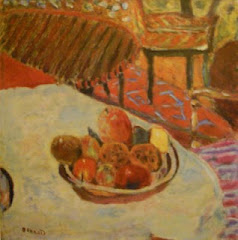
A great black oak tree on the hill; the storm in flight around it, summoning new forces for tomorrow’s fresh assault The moon, before its time, keeping a bright eye out. The sky is dark with temper, bruising, not with night. It is a kind of witching scene, fitful and fateful as Macbeth— the play whose name is not to be uttered, for fear of ill luck.
But the smell of tandoori spices is in the house; my charm against the storm, the night, the owl calling unseen in the trees somewhere nearby, the forces gathering up in the hills with the oak tree.
image: Bare Oak Tree. Portland, Oregon, Copyright Free Photos


























